I Tried 5 Tricks to See If Boiled Eggs Are Done—Here's What Actually Worked
The results were surprising.
As a chicken farmer with 150 laying hens and almost 20 years of experience in professional kitchens, I spend a lot of time with eggs. I collect and wash 5 dozen eggs every day—and they sell out at our farmstand by noon. And when I was the Test Kitchen Manager at EatingWell, I developed at least 10 deviled egg recipes (including my favorite Southern mashup, Pimiento Cheese Deviled Eggs). My whole week consisted of hard-boiling and peeling dozens and dozens of eggs, each time trying to figure out ways to make the process quicker and more efficient while not sacrificing the egg.
Suffice it to say, I've tried every method of cooking hard-boiled eggs, from steaming to boiling to simmering to pressure-cooking, to find a tried-and-true method to make sure the egg white-to-yolk ratio is cooked perfectly.
But how do you know if your hard-boiled egg is cooked perfectly unless you crack it open? To help make sure your hard-boiled eggs are perfectly cooked, I tested all the hacks, tricks and tips to see if they actually work. I scoured the internet, TikTok and my old trusty culinary school books, and I narrowed it down to six methods for determining if a hard-boiled egg is cooked.
To make sure I wasn't biased, I made sure that I didn't know which was the raw and which was the cooked egg until the end. I also tested white and brown eggs from the grocery store eggs as well as day-old eggs from my own chickens to make soft-boiled and hard-boiled eggs. Here's what I tried—and what actually worked.
Give the Eggs a Shake
The first method is just as it sounds: I literally just shook a bunch of eggs to see if they sloshed (raw) or not (cooked). And I couldn't tell which was raw or which was cooked, especially when the eggs were cold. When I repeated this test when the eggs were room-temperature, I found the slightest variation between the raw and cooked, but it was so minimal that I really can't recommend this method for determining if your hard-boiled egg is cooked. Also, it's impossible to tell how cooked they were because even the soft-boiled eggs were fairly firm when shaken.

Submerge the Eggs in Water
One hack I saw involved submerging eggs in a cup of warm water to see if any air bubbles formed around the shell. I tried this with several eggs that were varying degrees of cooked and raw, both cold and at room temperature, and it was virtually impossible to tell if there were any.
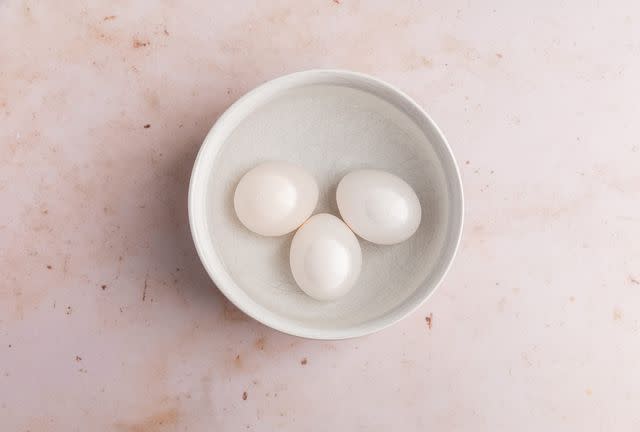
Use a Flashlight
On the farm, we shine a light into our eggs to determine if they are fertilized by our roosters (the process is called candling). I had never thought to use this same method to see if eggs were hard-boiled or not, but I was thrilled to see that it works. Raw eggs carry the light through the shell, while cooked eggs don't. However, this method doesn't tell you how cooked the eggs are, only that they are at least partially cooked. So if you're trying to determine if an egg is soft-boiled or hard-boiled, this isn't an ideal method.
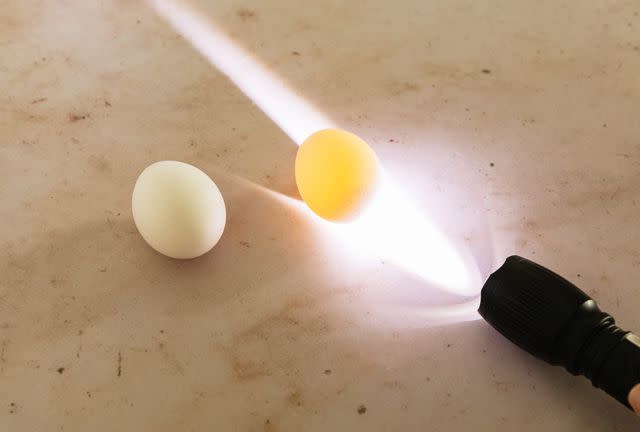
Spin the Eggs
I was surprised to learn that spinning eggs like a dreidel proved to be a useful method for distinguishing cooked versus raw eggs. Cooked eggs spin faster, more evenly and smoothly, while the raw eggs wobble and barely spin. Again, this method works best if you're just trying to determine if an egg is cooked or not, but it won't help you identify if it's soft- or hard-boiled.
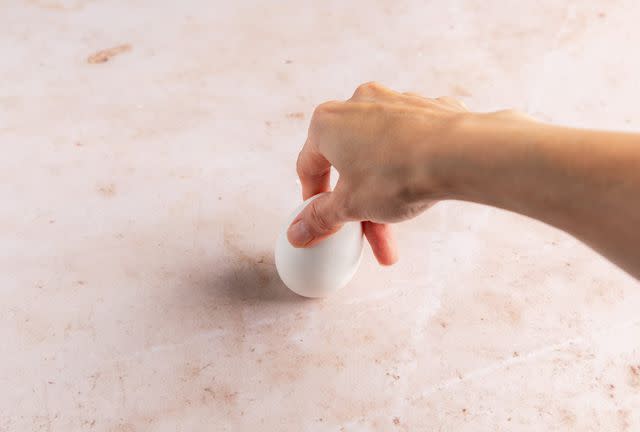
Related Content: The Best Way to Boil Eggs
Crack the Egg
Cracking an egg is an obvious way to determine if it's cooked or not, but the result is an egg with a broken shell, which may or may not be OK depending on how you are going to use the egg. If it's a raw egg, you now need to use it as such. If it's a hard-boiled egg, you won't know if it's soft-boiled or hard-boiled until you slice into the yolk.
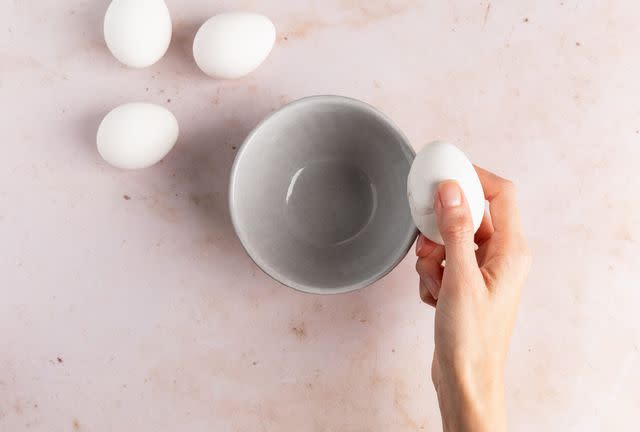
How to Hard-Boil Eggs Perfectly Every Time
The best way I've found to cook hard-boiled eggs is to use a timer. Place large eggs in a single layer in a saucepan and cover with water by 1 inch. Set the pan over medium-high heat and bring to a boil. When the water just begins to bubble vigorously, reduce the heat to achieve the barest simmer and cook for 10 minutes for hard-boiled eggs, 6 minutes for medium-boiled and 4 minutes for soft-boiled. (My favorite timer is Oxo's Triple Timer because you can have multiple timers going at the same time on one device—which means you could cook soft-, medium- and hard-boiled eggs all at once!) Transfer the eggs to a bowl filled with ice water and let sit until cool enough to handle. You can then peel the eggs and use them for deviled eggs, egg salad or as a topping for salads.
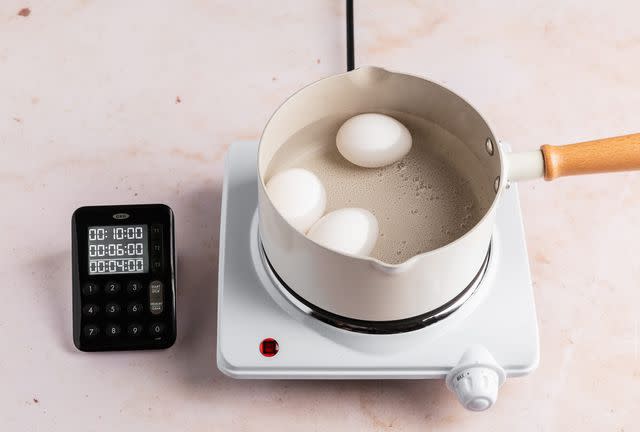
Bottom Line
After trying several methods to determine if an egg is cooked or not, there were a few that came out on top. Contrary to what you might have heard, hard-boiled eggs do not float—but they do act differently when you spin them or shine a flashlight through them. If you're only trying to determine if an egg is cooked or not, spinning and using a flashlight work, but if you'd like to know if the egg is soft-, medium- or hard-boiled without cracking it open, the only way to guarantee your egg will be perfect is to follow our instructions for perfectly cooking eggs every time.

